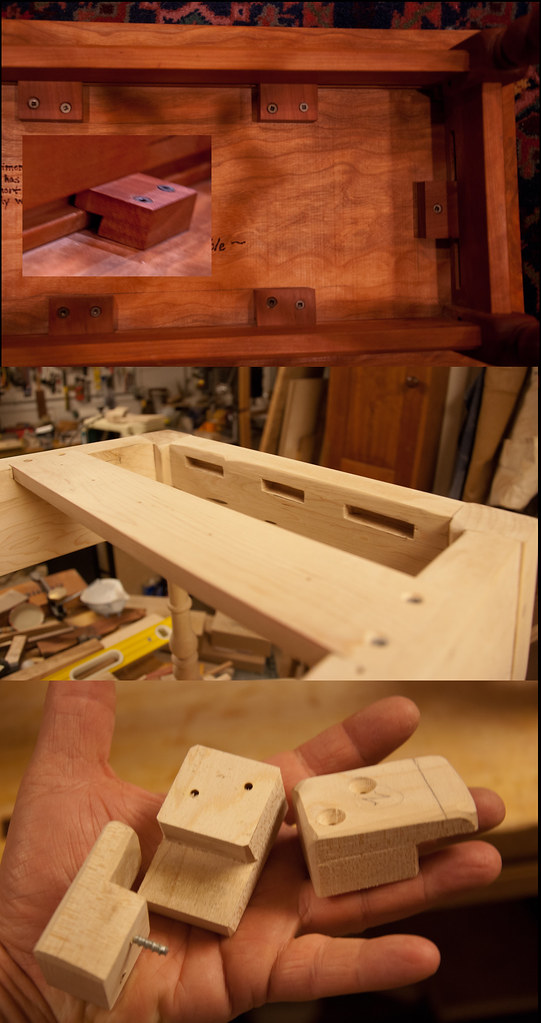I came across a joinery technique for attaching a top to a bookshelf case which uses button blocks. The plans are not very detailed. No dimensions of the Button Blocks were provided, and nothing was mentioned as to how to attach the "buttons". Essentially these look to be what I will call "mini cleats". They look to be 1 inch square blocks with a tongue. It appears that they are attached to the insides of the top rails in the case work of the bookshelf by making a small mortise in the rail.
As I said, I've never seen this technique before. Have any of you used this method? If so, how large do you make the "buttons" and what spacing would you recommend. How deep are the tongues and how thick? The exploded drawing clearly illustrates only one on the sides of the case (12" deep), and three on the front and back rails which are only 28" long. Are the pilot holes on these over sized to allow for some movement? Any help with Button Blocks is appreciated.





 Reply With Quote
Reply With Quote






